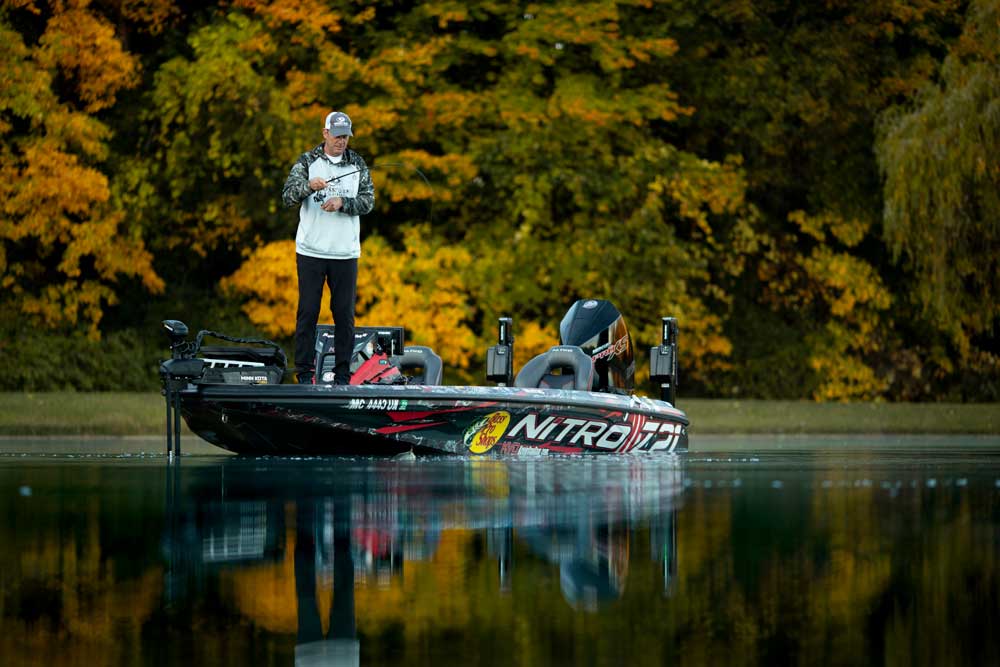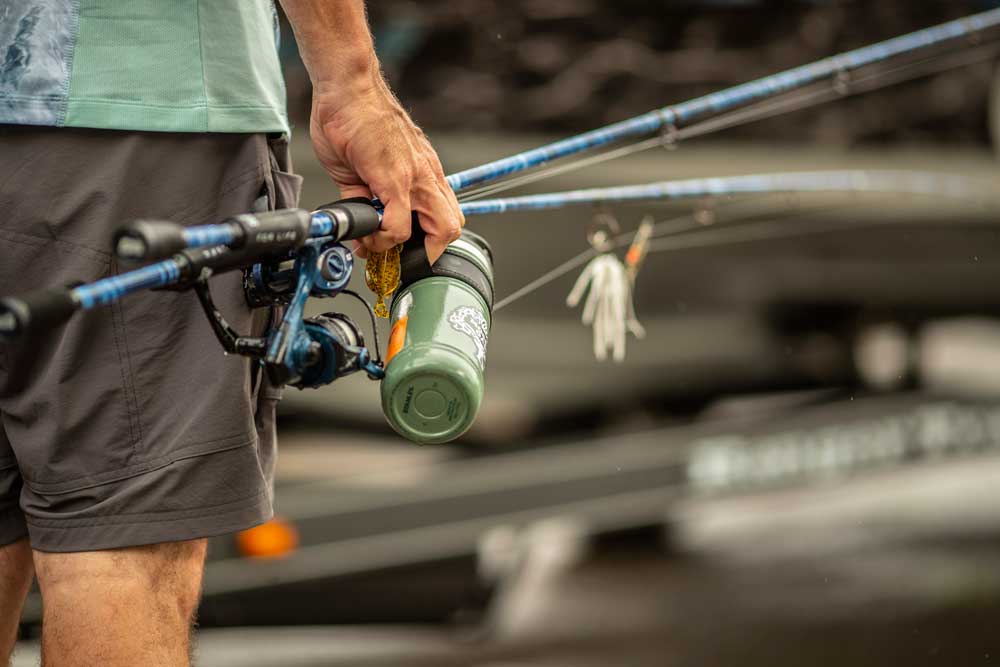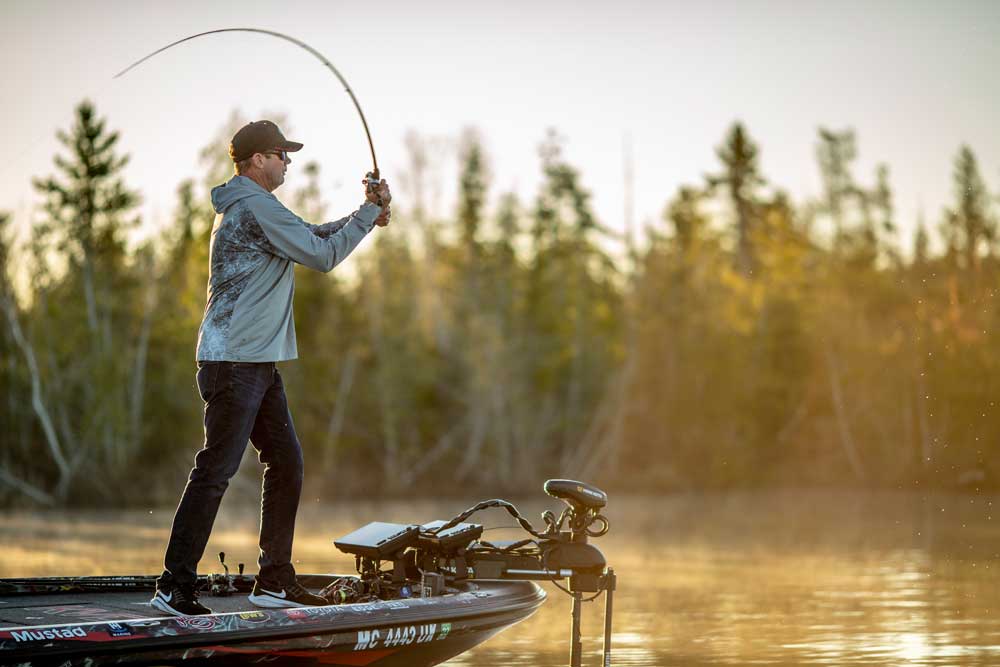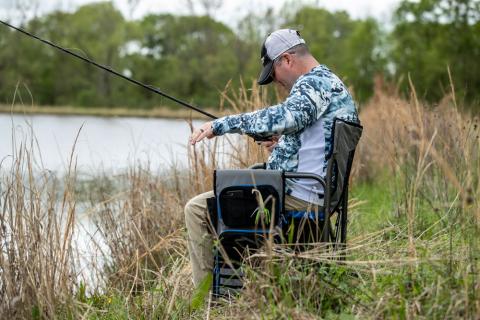The arrival of autumn means the water temperature is cooling down and fall bass fishing is heating up. Experienced fishermen chase the fall feed this time of year and catch big numbers and big fish. Patterns can be different for smallmouth vs. largemouth bass. If you follow these tips, tricks and how-to advice, you can catch more bass this autumn.

Tips for Putting an Early Autumn Hog in the Boat
During the fall feed, smallmouth will leave the deeper, cooler water they were in all summer and move to the now-cool shallow water. With winter coming on, they are searching for baitfish. When the smallmouth flurry hits, try a Ned Rig bait like a Ten Thousand Fish Sukoshi Bug, Z-Man Finesse TRD or Googan Squad Rattlin Ned. If you have not fished a Ned Rig for smallmouth, you are missing out. One tip for rigging your Ned Rig is to make sure it’s straight as possible. You want it to stand straight up during your presentation. It doesn’t take long, and you will learn that even the slightest bow in the bait will cost you fish.
Autumn largemouth bass will move into shallow water, pushing baitfish into pockets. Look for pockets on the inside turn of a point. Once the baitfish are trapped, largemouth will look to ambush bait fish there. A pocket with large grass flats is fantastic for fall bass fishing. Try fishing a 3/16 tube in the grass; pop it just over the top of the grass and let it fall. If the bite turns out to be small bass, the big boys may be a little deeper.
In early fall, many lakes will “turn over.” Until the lake settles down, the water is murky and oxygen depleted. This is a great time to fish the creeks for both small and largemouth bass. Try running up feeder creeks to throw buzz baits, square bill cranks and flip the running water. When you catch one bass, there are probably several others in that same spot.

Tricks for Fall Bass Fishing in the Everchanging Autumn Weather
Experienced smallmouth bass fishermen know they have to adapt to the changing water temperatures. When the water temperatures are above 50 degrees, more smallmouth will be shallow. When temperatures are below 50 degrees, they will stack up in deeper water. You will want to keep track of the water temperature days before your fishing trip.
As the water cools, smallmouth will move deeper. Side imagery can help you locate smallmouth in deep structure. Once you find them, try a six-inch swimbait with a one-ounce head. Let it sink and slow roll it over the bottom. That flip of silt is more than they can stand.
One early autumn trick for largemouth bass is to fish docks and piers after the sun is up. Once the sun is out and warming the water up, you will want to flip around the shade of the docks. A boat house next to a sharp drop off can hold many large bass. As you are fishing the dock, check out what the owner keeps up top as well. If you see fishing poles and tackle, you can bet a fisherman owns that dock. More than likely, he has sunk brush and structures a good cast’s distance from the dock. Often you will find that those brush piles are holding nice bass.
How to Get Bit in Late Autumn

When the water temperature drops below 50 degrees, bait fish tend to move to the main channel of the lake. It’s not uncommon to find them in water 25 feet deep or more. Smallmouth will hold nearby and stack up around deep structures in the channel. They continue that pattern as long as bait fish are nearby and the water temperature stays below 50 degrees.
Smallmouth prefer areas with rocky bottoms and don’t stray much during the late fall and early winter. Many anglers will throw a Rapala DT3 Fat, and the aggressive smallmouth can’t resist. With smallmouth stacked like they are, if you catch one, you will catch a bunch.
As the largemouth bass transition from early fall to late fall patterns, they can be challenging to find. Bait fish move to main creek channels and largemouth will follow. Look for areas where the main creek channel comes close to the bank. These areas tend to be deeper and bait fish will hold there. Often you will find largemouth holding in the structure around these areas.
There are several ways to find what depth the bass are holding. One is to drive your boat parallel to the shore across grass flats, staying in a depth of four feet. If it is overcast, a buzz bait works well and if it’s sunny a swim bait works well. At the end of the flat, turn your boat around and work the same area at 12 feet. Keep working the flat and get a little deeper each pass. Buzz bait and swimbaits will work well in grass flats, but don’t be afraid to throw the tackle box this time of year.
Fall Bass Fishing Is Contagious
Autumn finds more people sitting in deer stands and fewer people sitting in boats. There is less pressure on the lakes and fewer Jet Skis and, often, you have the lake to yourself. Your biggest hurdle is often the weather. The unpredictable weather that fishermen face this time of year is challenging. In a week’s time, fishermen often must adapt from autumn to winter bass fishing. Using these tips, tricks and how-to advice will help you spend less time trying to find the bite and more time getting bit.




























